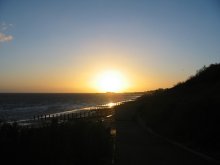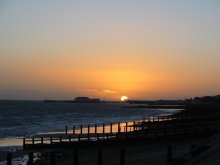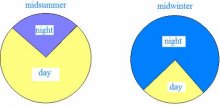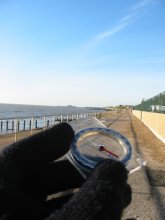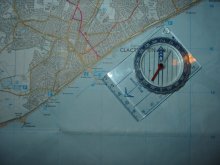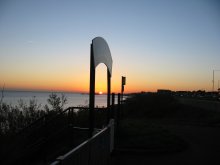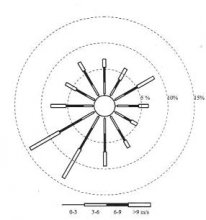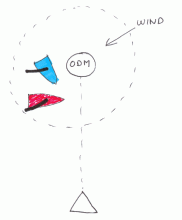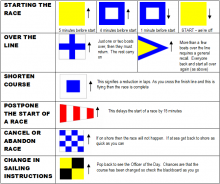Midwinter sunset
It’s a well known fact that the sun rises in the east and sets in the west. Unfortunately like many other well known facts it’s not true.
At least it’s only true twice a year, at the spring and autumn equinoxes. In mid winter and in mid summer it rises and sets at quite a different point of the compass. I was reminded of this the other day as I cycled back towards the Club from the Haven. It was around four o’clock on a glorious December afternoon and the sun was just going down. By the time I got back to the Club the sun was just setting over the pier. You can clearly see this in the photographs that I took at the time. In the first photograph the sun is still a glowing orb over the lifeboat house. In the second picture it finally goes down over the entrance to the pier. So in winter the sun sets over the pier. But when we sail in the Wednesday evening series at Gunfleet in June and July we know that the sun sets over the land. If you are out at sea you can watch the sun setting over the Clubhouse and as you sail back to the beach you enter the shadow made by the cliff. So it’s definitely the case that the sun sets in different places depending on the time of the year. Now I’m perfectly prepared to believe that something similar happens at sunrise though I have no particular wish to get up early enough to find out. But let’s say it does. What’s the explanation? I was watching Adam Hart-Davies on the telly recently (well, it was either that or Strictly Come Dancing) and he was using a diagram something like the pie chart above. At the equinoxes in March and September both day and night are exactly 12 hours long and the sun rises due east and sets due west. But in mid-summer (left hand diagram) the day is much longer than the night and the sun rises in the North East and sets in the North West (over GSC’s Clubhouse). In midwinter however the days are very short (right hand diagram). The sun rises in the south east and sets in the south west (above Clacton Pier). However the exact bearing at which the sun rises and sets will depend on where you are on the earth surface. People in Scotland have an even shorter day in midwinter than we do. For the Scots the day “slice” is smaller and therefore the sun rises further south and sets further south too. So what is the exact compass bearing of mid winter sunset at Holland on Sea? I am going to assume that on midwinter’s day the sun does set exactly over the pier. What is the bearing of the pier from the Club? Unfortunately I couldn’t find a proper yachty sighting compass (though I know I had one somewhere) so I had to make do with an ordinary walking compass. Looking over the compass with the red magnetic needle pointing north, as you are supposed to do, the bearing is approximately 230 degrees, give or take a few degrees. A more accurate method is to use a map, as in the second picture. Place the compass parallel to the bearing you need and turn the bezel so its lines are parallel to the lines on the map. Then read off the bearing which as you can see is about 228. This is approximately south-west (south is 180 and west is 270 so SSW is half way between those – 225 degrees in fact). OK I know it isn’t very accurate and I know that you can now buy a handheld GPS from Halfords for £2.50 that tells you to the nearest metre where you are, where you’ve been, where you are likely to go in the foreseeable future and how long you will have to sit in traffic to get there but the old technology is more fun. And you are more in control. What’s the point of all this? Well, I’m indebted to Adam Hart Davis for pointing out that mid-winter sunset is exactly opposite mid summer sunrise. Apparently this is what Stonehenge is all about, and the other famous Standing Stones around the country where the Druids go to celebrate the midsummer and midwinter solstices. The first shaft of light falling on the key stone indicates that it must be midsummer – or alternatively the last shaft of light indicates it must be midwinter. You just have to use common sense to figure out which is which. If your hands are cold it’s summer and if your hands are freezing it’s winter. Now I must admit that I don’t quite follow the logic of the ‘henges’ but it was obviously very important to ancient peoples to know the exact date of mid winter (because they would know that the days would start to get longer from then onwards and all they had to do was to get Christmas and New Year over with and then they could get back to normal again).
So where does this leave us? The upshot is that it’s entirely possible that – like Stonehenge - Gunfleet Sailing Club is on a ley line. The Club’s ley line stretches from the end of Clacton Pier through the Club to the point at which the midsummer sun rises over Holland Country Park. To test this hypothesis I went down to the Club just before sunset on 16 December, five days before the winter solstice on 22 December. I was again armed with a digital camera and it was yet another sunny afternoon. And lo and behold just as I had suspected the last shafts of light from the setting sun shone through the Club’s sign at the top of the cliff. This is the photograph I took. What more proof could anyone want of the wisdom of the Club’s founding fathers? Obviously back in the distant past when the Club was formed the existence of ley lines, and in particular the one passing directly through the Club, was well known. Knowledge that has since been forgotten. So at long last we seem to have discovered – or should this be rediscovered why it is you feel such a sense of well-being when you’re down at the Club.
Here’s looking forward to a great new year.
(Gunfleet Gazette Winter 2006-07)

